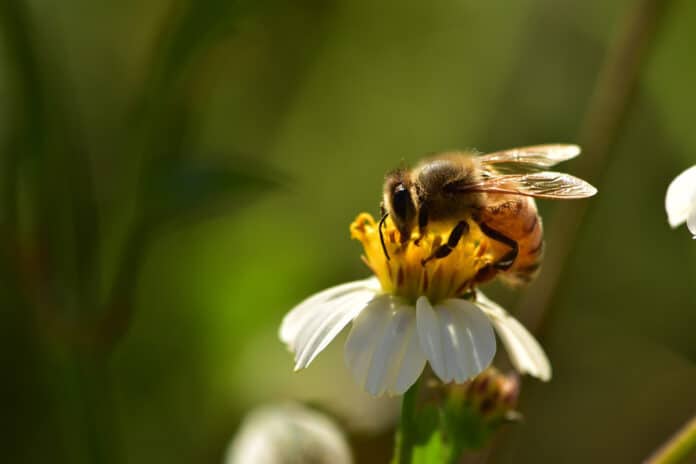Social Learning occurs when one individual learns by observing or interacting with another. Eusocial insects (i.e., insects with an advanced level of social organization) use social Learning. Still, it is unclear whether this Learning shapes their communication, which can be remarkably sophisticated and cognitively complex.
The honeybee waggle dance has long been recognized as a behavior that communicates information about resource location from a foraging worker to her nest mates. However, it is yet to be known whether following the dance can improve the performance of young waggle dancers or whether the dance is entirely genetically pre-programmed (innate).
A new study by the Xishuangbanna Tropical Botanical Garden (XTBG) of the Chinese Academy of Sciences and the University of California San Diego demonstrated that correct waggle dancing requires Social Learning.
Honey bees use social signal learning to improve their ability to waggle dance.
Waggle dance was believed to be performed by a successful forager who has located a good source of pollen, nectar, or water. It offers information about the presence, quality, identity, direction, and distance of the source so that nestmates can find and use it.
The scientists built colonies where they saw the first waggle dances made by foragers who either followed or did not follow other waggle dancers. One cohort of one-day-old bees was used to establish each of the five experimental colonies.
Dr. DONG Shihao, the first author of the study, said, “As these bees aged, we monitored the colonies until we observed the first waggle dances and then observed the same dancers 20 days later when they had more foraging and dancing experience.”
“We found that bees that did not have the opportunity to follow any dances before their first dance produced significantly more disordered dances with larger waggle angle divergence errors and incorrectly encoded distance.”
“When the same bees were older and had experience of dance following and dancing, they significantly reduced divergence angle errors and produced more orderly dances. However, they were never able to produce normal distance encoding.”
Why should honey bees use social Learning to improve their waggle dancing?
TAN Ken of XTBG said, “Learning is a useful way to refine behaviors for local conditions. We suggest that the unique topologies of each colony’s dance floor make it advantageous for novice dancers to learn from more experienced ones. Another possibility is that experienced dancers may transmit distance encodings based on local optic flow to nestmates.”
Journal Reference:
- Shihao Dong et al. Social signal learning of the waggle dance in honey bees. Science. Link to paper.
